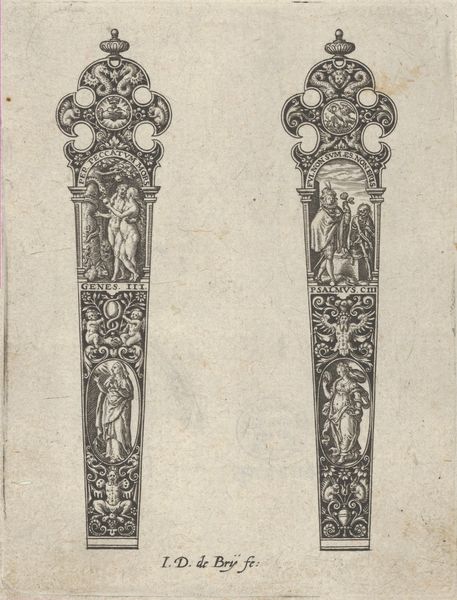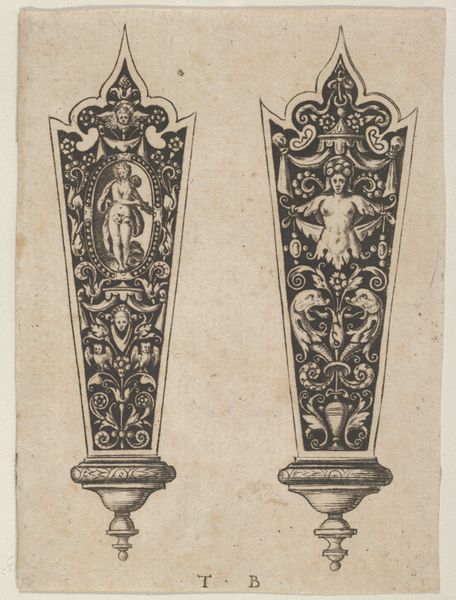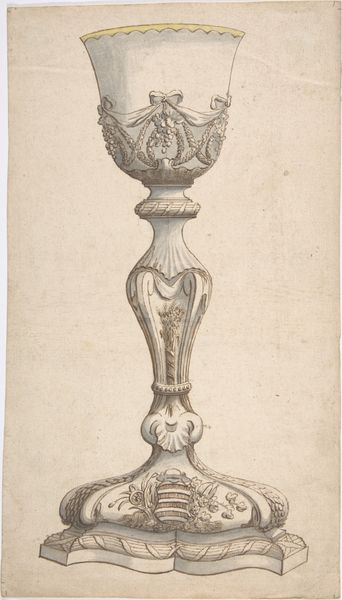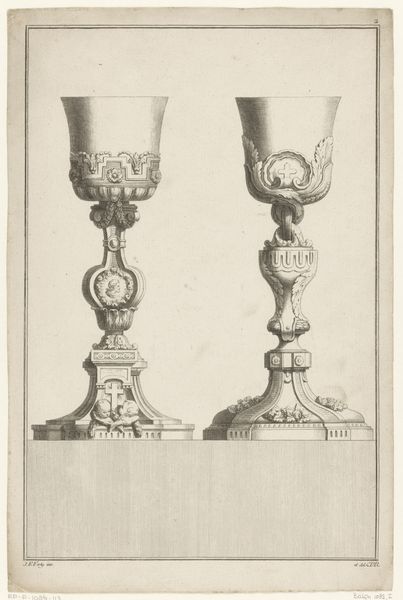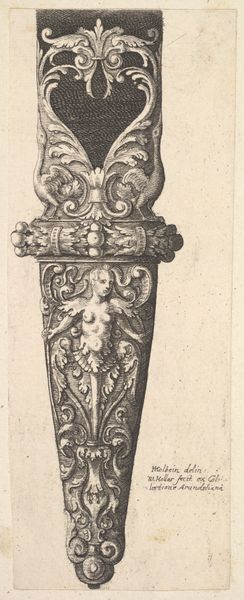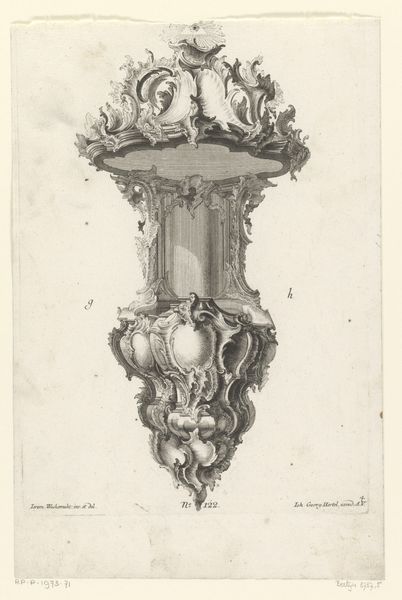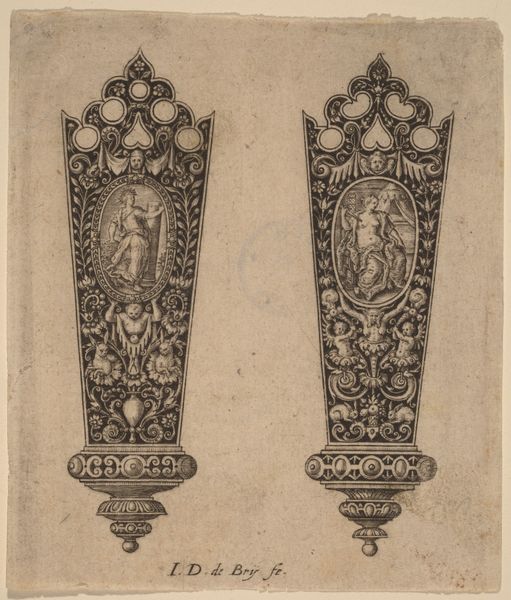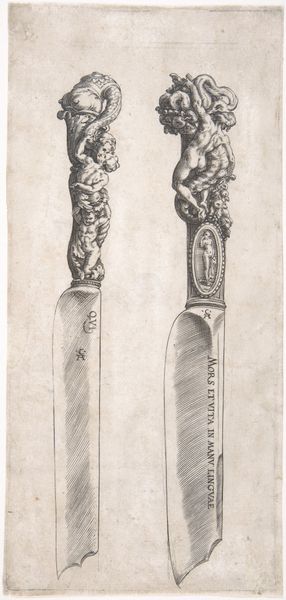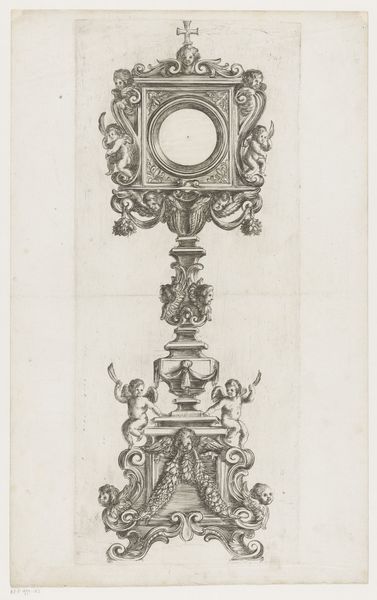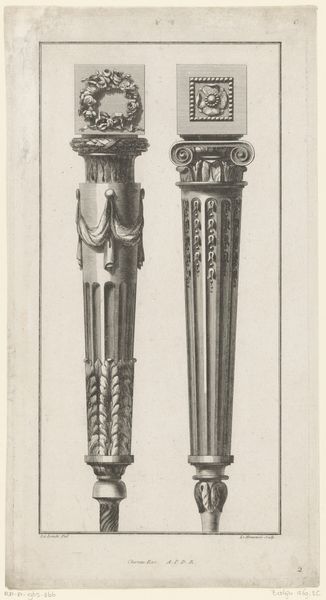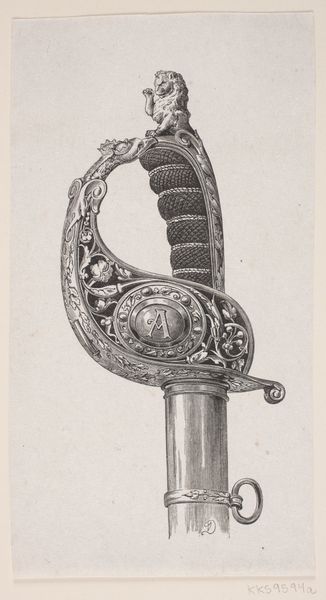
drawing, print, metal, engraving
#
portrait
#
drawing
# print
#
metal
#
figuration
#
11_renaissance
#
decorative-art
#
engraving
Dimensions: plate: 10 1/16 x 4 3/4 in. (25.6 x 12 cm) sheet: 10 1/4 x 4 7/8 in. (26 x 12.4 cm)
Copyright: Public Domain
Curator: Let’s turn our attention to this intriguing print: "Design for Two Knife Handles" by Cherubino Alberti, dating back to the Renaissance, between 1553 and 1615. It’s currently housed at the Metropolitan Museum of Art. Editor: Wow, those are not your grandma's butter knives! I'm immediately struck by the contrast – one feels quite regal, almost stoic, with the eagle, while the other…well, he’s got some serious gut issues judging by the inscription. Curator: Yes, both handles are richly ornamented. Focusing on their manufacture, the prints give us an insight into the Renaissance fascination with elaborate table settings and the social rituals around dining. The materials themselves, likely metal for actual use, underscore a confluence of artistry and utility. We can imagine the level of craftsmanship and labor involved in bringing these designs to life. Editor: You’re right; there is definitely a story being told. Imagine holding one of these... feels more like brandishing a miniature sculpture than cutting a loaf of bread! And Alberti captures the personalities so well, the almost haughty bird on one, and the fleshy, indulgent chap on the other… there's a humor there, isn't there? A sort of dark wit about appetite and social status. Curator: Absolutely. And consider how prints such as this facilitated the spread of such designs, democratizing access to high-end aesthetics and potentially inspiring various levels of imitation in different workshops. The engraving as a reproducible medium made aspirational design available beyond the wealthiest echelons of society. Editor: It’s fascinating how even something as functional as a knife handle could be a site for expressing complex ideas and social commentaries! Curator: Indeed, it reframes our understanding of design and consumption within Renaissance society, moving beyond aesthetics to highlight the interconnectedness of material culture and social dynamics. Editor: Looking at them together, I wonder if they're also hinting at some moral lesson, maybe temperance versus gluttony? It all seems a little much for just serving up dinner! Curator: Perhaps... In all, it underscores the cultural and economic investment in even seemingly small, decorative items, reflecting the Renaissance emphasis on humanist values and refined living. Editor: I find I see them differently now—I started off with only considering aesthetic impressions, and now, wow, what a dense concentration of craft, class, and cheeky artistic judgment!
Comments
No comments
Be the first to comment and join the conversation on the ultimate creative platform.
